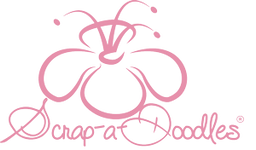
Sceptre Seven Designs - Stencils - Sport Balls
Step 1 - Masking: When stencilling, use pieces of masking tape to cover stencil areas you do not want to colour in the first colour you are painting (image 2). Then once you have completed painting all the areas with the first colour and have allowed it to dry properly, remove the masking tape from the next areas you want to paint, and cover the areas you have just finished. It is always best to use a low-tack masking tape to prevent surface damage to the painted object you wish to stencil.
Tip: If you feel that the tape is a little too tacky, stick it to your hand a few times. This will help to remove some of the stickiness from the tape.
Step 2 - Measuring: Use a ruler or tape measure to measure the length of the surface you want to stencil. Using a pencil, lightly mark the mid-point (image 3). The mid-point of the object (e.g. wall, table cloth) is the best place to start stencilling. Calculate the amount of times the pattern will fit into the surface and lightly mark each stencil position.
Step 3 - Practice: Use a scrap piece of paper to practice your stencilling technique. It is always best to test your work first, before starting on the final surface. The most common mistake made when stencilling is to put too much paint on the brush. Use very little paint on the brush, and build up the colour slowly. The paint should never be brushed on, as the paint will collect on the edges of the stencil holes and seep under the stencil, causing a mess!
Tip: Once you have dipped the brush in the paint, dab it on a piece of paper towel to work off the excess paint (the brush should be almost dry). This will help to prevent paint seeping under the stencil and messing up your project.
Step 4 - Starting: Use masking tape to tape the stencil down to the surface firmly (image 4). The last thing you want is for the stencil to move once you start stencilling. Gradually build up the paint, from the edges of the holes, inwards (image 5).
Stipple brushes are the best type of paint brushes to use.
